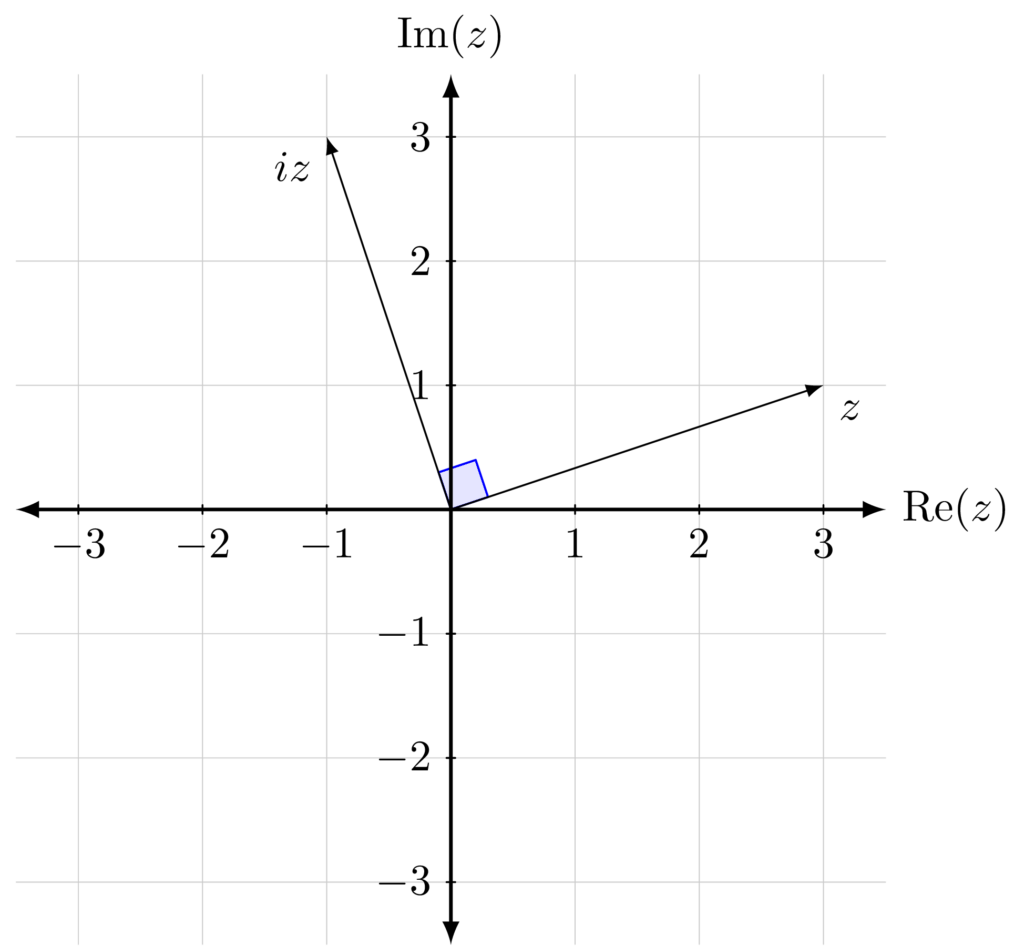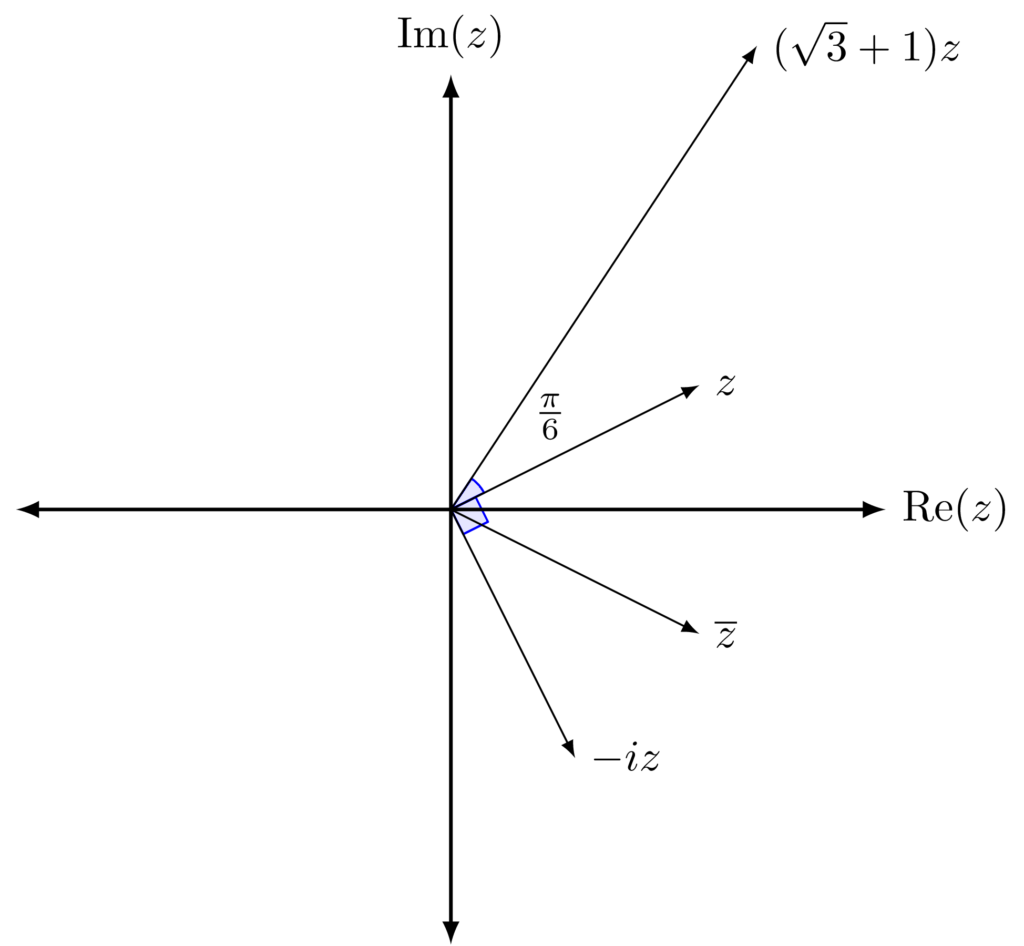Scaling complex numbers
When a complex number \(z\) is multiplied by a positive real number, then it scales the length of the vector, keeping the same direction. If it is multiplied by a negative real number, then it reverses the direction and also scales the length.
Example. Let \(z=1+i\). Then we can plot \(2z\), \(-3z\) and \(0.5z\) as vectors.

Rotating complex numbers
When a complex number \(z\) is multiplied by \(r(\cos\theta+i\sin\theta)\), it is rotation of \(\theta\) counter-clockwise and the length is multiplied by \(r\).
Similarly, when a complex number \(z\) is divided by \(r(\cos\theta+i\sin\theta)\), it is rotation of \(\theta\) clockwise and the length is divided by \(r\).
Example. When a vector is multiplied by \(i\), it is a 90 degree rotation counterclockwise with no change in modulus.

Worked exercise. Let \(z=re^{i\theta}\), where \(0<\theta<\frac{\pi}{2}\). Represent \(z\), \(-iz\), \(\overline{z}\) and \((\sqrt{3}+i)z\) as vectors on the complex plane.
Solution. \(-iz\) is a clockwise rotation of \(z\) by 90 degrees. \(\overline{z}\) is a reflection of \(z\) in the real axis. \(\sqrt{3}+i = 2e^{\frac{i\pi}{6}}\), so \((\sqrt{3}+i)z\) is a 30 degree rotation counter-clockwise, followed by a scaling by 2.

Problems
- Let \(z=1+2i\). Plot the following complex numbers as vectors on the complex plane.
- \(z\)
- \(-z\)
- \(\overline{z}\)
- \(3z\)
- \(iz\)
- \(z_1\), \(z_2\) and \(z_3\) are three complex numbers such that $$z_2-z_1=i(z_3-z_1).$$ If points \(P\), \(Q\) and \(R\) represent the complex numbers \(z_1\), \(z_2\) and \(z_3\) respectively, what geometric properties does the triangle \(PQR\) have?
- Let \(O\) be the point that represents the complex number \(0\), and points \(P\) and \(Q\) represent the complex numbers \(z_1\) and \(z_2\) respectively. Triangle \(OPQ\) is equilateral. Show that \(z_1^2+z_2^2=z_1z_2\).
- Hard. Let \(z\) and \(w\) be complex numbers such that \(\frac{z-w}{z+w}\) is imaginary. Show geometrically that \(|z|=|w|\).